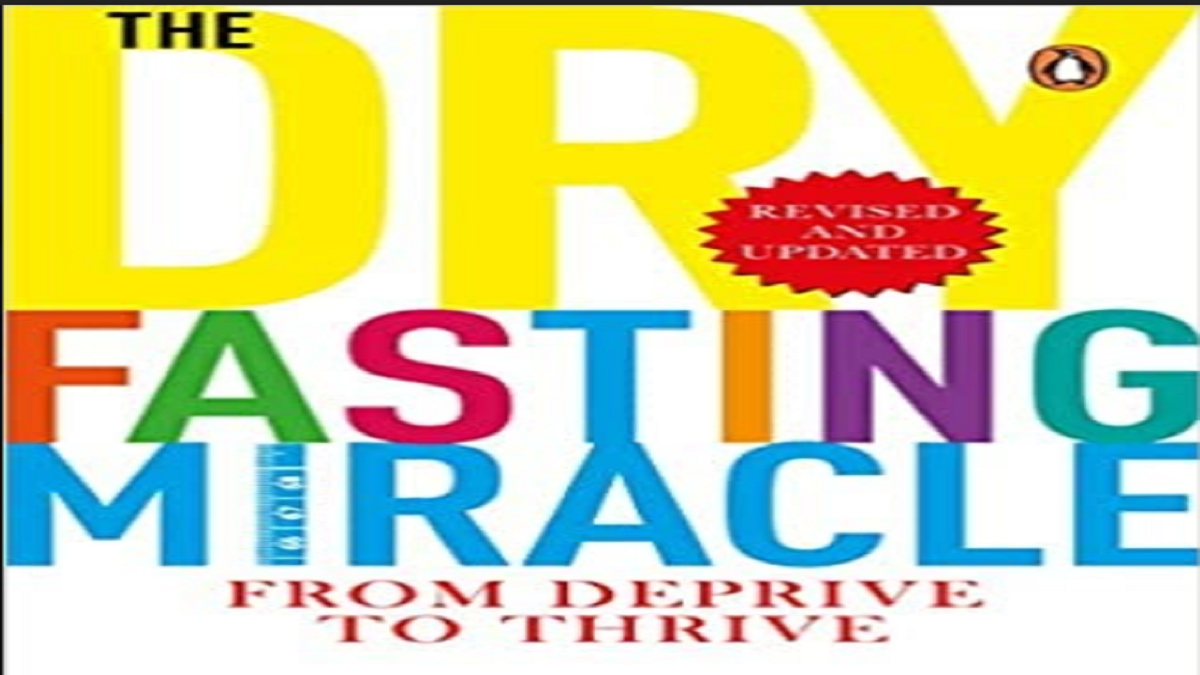


You must always turn to nature when you are sick or afflicted with a disease. Nature holds all the answers and when you align yourself with it, you heal and recover. Dry fasting is one such answer. Dry fasting is complete abstinence from food and water for a particular window during the day, followed by breaking the fast in a specific manner. This window during which one fasts is called the elimination phase and the window during which one eats is called the building phase. Dry fasting—or absolute fasting or Hebrew fasting— comes naturally to animals that are sick and wounded. They retire to a secluded place and fast until the body is restored to normal. It’s their natural instinct to refuse food during this time of recovery. At most, they partake only of water and medicinal herbs. Ever seen a sick cat eat grass? The body is intelligent enough to heal. When the crisis is over, the appetite returns naturally. Humans also have fasting instincts, just like animals. But unfortunately, when we fall sick, in most cases we fail to follow nature. We continue to eat food, even if in small amounts and suffer because of it.
Go back a thousand years. What did the early man do? Since food was scarce, they could only feast when they hunted—otherwise they fasted. This evolutionary adaptation has made our bodies efficient at fasting even in this era. If one observes children—and even adults, for that matter—the moment they get sick or hurt, their appetite is what drops first. By switching on its healing mechanism, the body uses its natural intelligence to protect us. The appetite is lost for healing to take place as the immune system requires a lot of energy.
The body is made up of five elements: earth, water, fire, air and ether. Fasting cleanses the element of Ether. During dry fasting, all vital forces are engaged in cleansing the body. It should be understood that the fast in itself does not bring about a new vital force but removes toxins in the body, which are the real cause of ill health. In the case of a disease, however, dry fasting is most beneficial when one practises it right from the initial stage.
Types of dry fasting
Soft dry fasting allows an individual to come in contact with water, which could be through washing hands or the face or bathing. This is preferred for beginners and those who go to the office. I recommend you begin with this if you are a working professional and new to dry fasting. Once you get used to this, you may try hard dry fasting, which is on a more advanced level. Hard dry fasting doesn’t allow any contact with water, not even while washing clothes, bathing or brushing. When one dry-fasts, the body becomes like a sponge and the skin becomes highly capable of absorbing any moisture that it comes in contact with (even atmospheric moisture).
The five stages
Stage 1 lasts for the first couple of days of the fast or about twelve– forty-eight hours from the last meal. This stage is when the body transitions into fasting mode— for many of us this is the most challenging part of the process. This stage is when one starts to feel hunger pangs as regular mealtime routines are skipped. Most first-time fasters start to feel a reduction in their energy levels. These effects can induce a negative mood, irritability and impatience. Since the body goes into power-saving mode, there may be a lowering of the heart rate and blood pressure.
Stage 2 starts around the end of Day 2 and lasts until Day 7. A lot of changes begin to happen during this stage and there may be noticeable changes in physical appearance as well. By this time, ketosis has begun. One might stop feeling hungry and tired. During stages 1 and 2 of the fast, the body expels toxins and damaged cells via urine or stool.
Stage 3 typically happens between Day 8 and Day 15. This stage includes a dramatic improvement in mood and mental clarity and is the stage ‘seasoned’ fasters look forward to the most. The body starts going into ‘healing mode’. The healing process begins as the digestive system takes a break from the common stress factors and toxins it had been enduring daily. As a result, there are fewer free radicals and the oxidative stress decreases. When the cumulative effects of this stage add up, it encourages healthy ageing and there are fewer health complications. Although this has not been researched enough, the healing process seems to improve health for some.
Stage 4 occurs sometime around Day 16 and continues through the duration of the fast. While there may be some changes moving beyond this juncture, there is a daily balance that starts to set in.
Stage 5 involves breaking the fast. It may come sooner or later, depending on the fasting goal. How one chooses to end the fast is critical. Depending on how long the fast has been, one may need to ease his/her way back into eating to avoid discomfort and complications.
All-round benefits
Physical benefits of dry fasting include immunity boost, keeps inflammation and infection in check, induces autophagy, improves cardiac health, improves liver health, improves bone health, improves kidney health, keeps PCOD in check, improves the functioning of the digestive system, aids weight loss, induces higher energy levels and promotes lean muscle growth. Improvement in brain health and reduction in cravings are among its mental benefits. The spiritual benefits are it enhances the connection between our physical and spiritual selves, induces gratefulness and increases self-control.
The article has been an excerpt from the book, ‘The Dry Fasting Miracle: From Deprive to Thrive’ by Luke Coutinho and Sheikh Abdulaziz Bin Ali Bin Rashed Al Nuaimi (Penguin Random House)